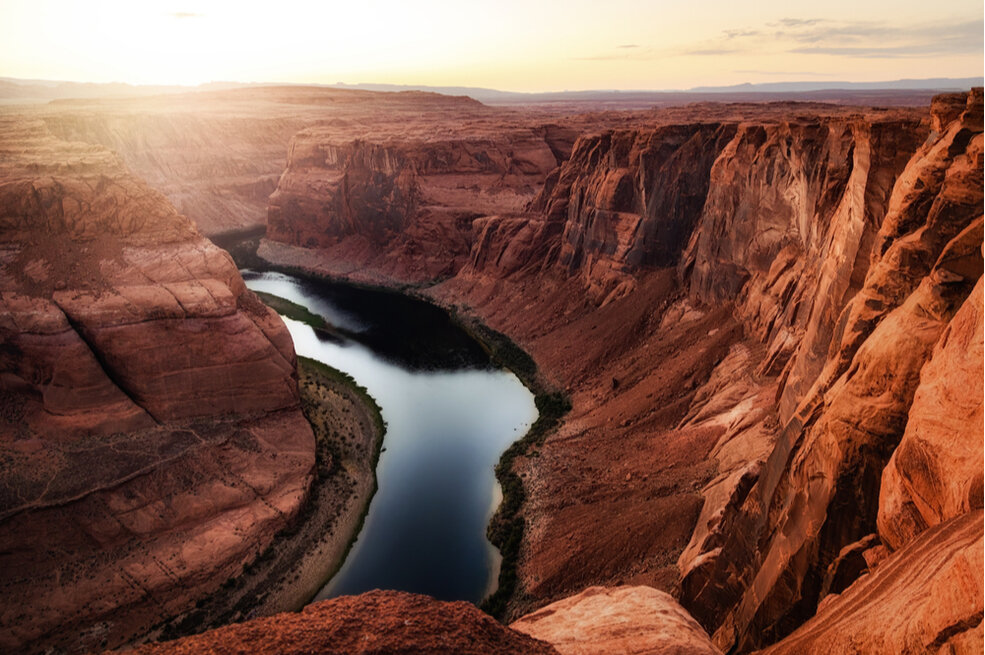The Future of Climate Action Is Collaborative. Both Water and Philanthropy Are at the Center
/The colorado river is at a historic low, prompting federal water restrictions. Susan Schmitz/shutterstock
The West is currently in the grip of a devastating mega-drought, which is just one of the worrying signs of climate change showing up throughout the country and around the world. This summer has delivered unrelenting, record-breaking heat, ferocious wildfires, unprecedented flooding—and the cascade of human and environmental costs has been practically incalculable.
In the Colorado River Basin, the Bureau of Reclamation issued a historic shortage declaration in August, triggering mandatory water cutbacks. Recent modeling indicates that the crisis is expected to deteriorate even further next year. And in California, the two largest reservoirs supporting agriculture in the Central Valley and cities all along the coast are less than 25% full, and nearly the entire state is living within a drought emergency.
Given the frightening pace of change, can we move quickly enough to adapt, and what is philanthropy’s role? In recent years, we’ve seen promising examples of what’s possible—and what’s needed—when it comes to what philanthropy can do to build climate resilience.
This past June, nonprofits, foundations and corporations came together behind the leadership of tribal governments and the state of Arizona to forge a landmark deal along the Colorado River that will conserve 150,000 acre-feet of water, which is one-half of the entire State of Nevada’s annual water rights entitlement. As part of the Colorado River Drought Contingency Plan (DCP) developed in 2019, the Colorado River Indian Tribes (CRIT) will conserve this water and lease it to the state of Arizona to prepare for future shortages.
Millions of federal, state and local dollars were allocated in 2019 for this deal, but it was not enough. So the Walton Family Foundation, Gordon and Betty Moore Foundation, and Water Funder Initiative, joined by NGOs like the Environmental Defense Fund, and corporate partners like Intel, Google and Microsoft, led an effort to raise the additional $8 million needed to deliver this water conservation project with the CRIT and the state of Arizona—thus safeguarding the overall DCP.
This agreement is the kind of multi-sector approach that will be needed to adapt to climate change. It also highlights how philanthropy can support bold, complex, large-scale collaboration. The victory in Arizona culminated with a group of funders stepping up to fill a gap. But the broader story of the DCP and the Colorado River is one of sustained investment, persistent implementation and incremental progress.
The same is true in California’s Central Valley, which puts fruits and vegetables in grocery stores across America and is one of the most productive agricultural regions on the planet. It’s also home to a number of communities struggling to make ends meet, and which, among other things, are bearing the brunt of climate change on top of the fickle and dangerous business of farming, all exacerbated recently by the pandemic. And water, of course, is at the heart of the matter.
During droughts, parts of the Central Valley rely on groundwater for 80 to 100% of the water they need. Coming out of the last drought, and to provide more resilience during future ones, funders like the S. D. Bechtel, Jr. Foundation and the Water Foundation and their NGO partners worked together to communicate about the pressing need to improve the region’s groundwater management. Many of the policies they championed were ultimately enacted in California’s Sustainable Groundwater Management Act (SGMA).
Funders and nonprofits have been committed to sustainable management of groundwater policies for years to ensure the law’s successful implementation. With requirements for 120 groundwater basins to establish and implement plans to reduce their water use, these foundations saw this as an opportunity to conduct dozens of experiments, yielding numerous innovations that can be shared throughout the world. This process also amplified the voice of organizations and local communities on the ground to make sure SGMA advances their needs and values and not simply the interests of those with means.
Both examples highlight what needs to be done in the coming decades, as the climate crisis forces increasingly difficult conversations about precious resources. More than ever, we know that new approaches are needed to help our communities directly respond to and mitigate the extreme risks of climate change to economies, communities, landscapes and the water resources that support them.
Philanthropy has a crucial role to play in helping to design solutions, and in helping to rally NGOS, businesses and public officials to bring these solutions to bear. As funders, we need to be willing to do more, to go first and take risks. Recent announcements from major funders, including the Protecting Our Planet Challenge and the creation of new funds like Galvanize Climate Solutions—represent a promising trend and growing awareness that tackling climate change is going to require bigger, bolder and swifter action. But in doing so, we need to keep our ear firmly to the ground to truly follow the lead of the communities that live with these tough problems day-to-day, and which will therefore need to live with the solutions. And we must equip our partners with the resources they need over the long term, so that they (and we) are ready when transformative windows of opportunity arrive, especially if success doesn’t come quickly. It rarely does.
Allison Harvey Turner is CEO of the Water Foundation. Ted Kowalski is Senior Program Officer & Colorado River Initiative Lead at the Walton Family Foundation.









